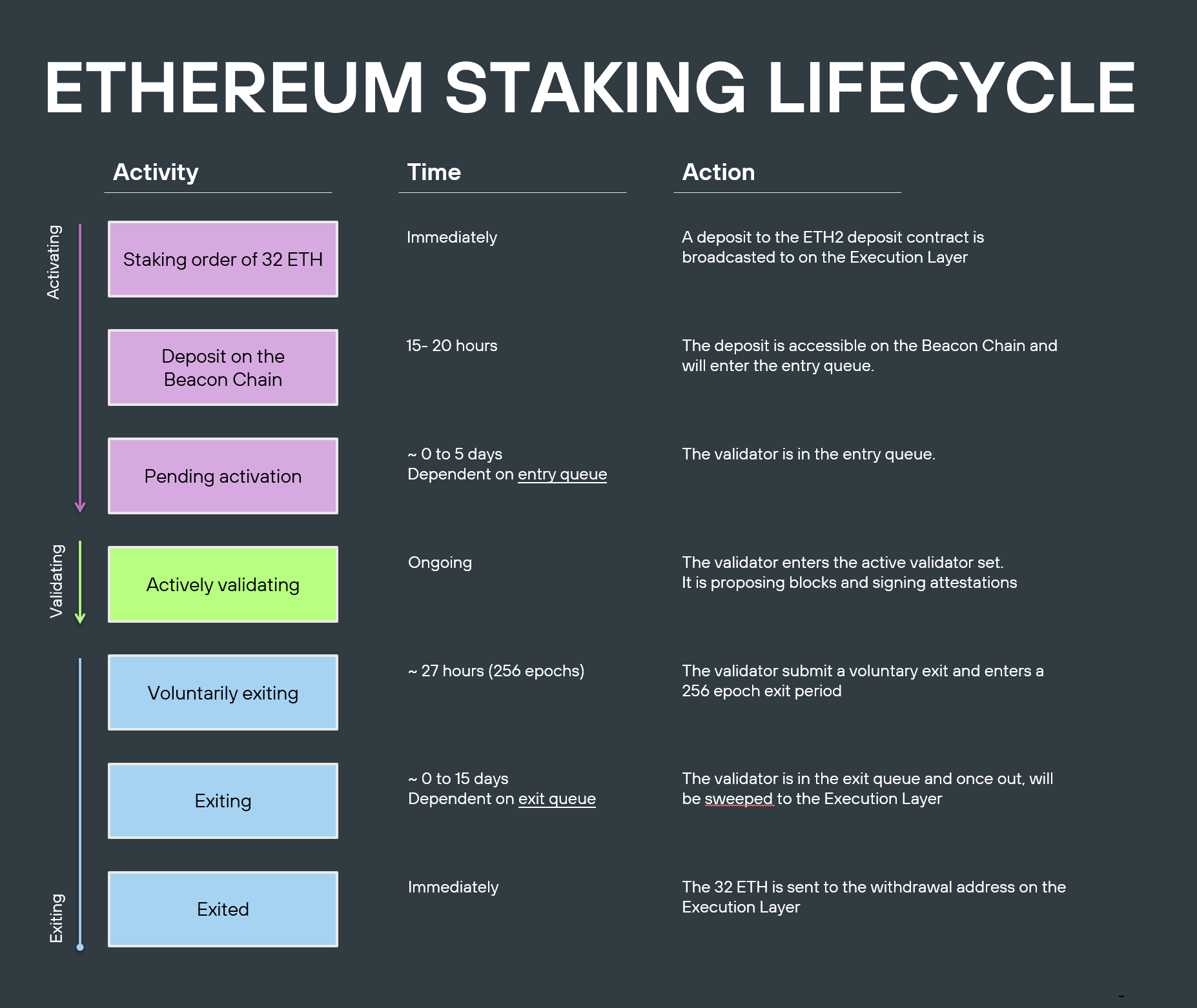Validator Lifecycle
The lifecycle of Ethereum Staking
The lifecycle of a validator on the Ethereum network is a structured process that involves several stages from activation to potential exit. Understanding these stages is crucial for anyone participating in Ethereum staking, as it ensures validators are well-prepared for their responsibilities and aware of the procedures involved in entering and exiting the validator pool.
The key stages in the validator lifecycle include:
- Activating: This initial phase involves depositing ETH from the Execution Layer to the Consensus Layer and waiting in the entry queue before becoming an active validator.
- Validating: Once activated, validators are responsible for proposing and attesting to new blocks, earning rewards for their participation.
- Exiting: Validators can choose to exit the network voluntarily or may be forced out due to inactivity or misconduct. This phase includes a waiting period and the final retrieval of staked ETH and earned rewards.
The visual below presents the validator lifecycle, highlighting the main activities, their duration, and the corresponding actions at each stage.

Real-time Queue Overview
For real-time status of the entry and exit queues, including current wait times and validator information, visit the Validator Queue.
Find your validator status
When staking Ethereum via Northstake's API, you can get the status of your validator by using the endpoint GET /managedUsers/validators which returns the metadata for the validator including its status.
[
{
"balance": 32,
"asset": "ETH",
"validator_public_key": "string",
"validator_index": 0,
"status": "activating",
"exit_estimate": {
"estimated_exit_time": "2024-06-11T12:51:47.976Z",
"timestamp": "2024-06-11T12:51:47.976Z",
"estimated_exit_transaction_deadline": "2024-06-11T12:51:47.976Z"
},
"key_holder": "northstake",
"validator_type": "default_validator",
"contract_address": "string"
}
]Updated 15 days ago
